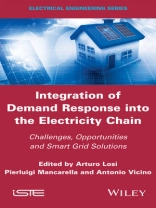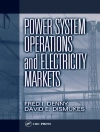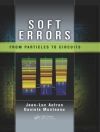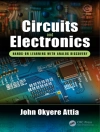The concept of Demand Response (DR) generally concerns methodologies, technologies and commercial arrangements that could allow active participation of consumers in the power system operation. The primary aim of DR is thus to overcome the “traditional” inflexibility of electrical demand and, amongst others, create a new powerful tool to maximize deployment of renewable energy sources as well as provide active network management solutions to help reducing the impact of limited grid capabilities.
DR allows consumers to actively participate in power system operation, thus bringing new opportunities in emerging energy markets as well as tangible system benefits. In this sense, DR is considered one of the key enablers of the Smart Grid concept. However, DR also poses a number of challenges, particularly when “active demand” is connected to the Low Voltage network, thus affecting all the actors involved in the electricity chain.
This book presents for the first time a comprehensive view on technical methodologies and architectures, commercial arrangements, and socio-economic and regulatory factors that could facilitate the uptake of DR. The work is developed in a systematic way so as to create a comprehensive picture of challenges, benefits and opportunities involved with DR. The reader will thus be provided with a clear understanding of the complexity deriving from a demand becoming active, as well as with a quantitative assessment of the techno-economic value of the proposed solutions in a Smart Grid context.
Many research contributions have appeared in recent years in the field of DR, both in journals and conference proceedings. However, most publications focus on individual aspects of the problem. A systematic treatment of the issues to be tackled to introduce DR in existing electricity grids, involving the extended value chain in terms of technical and commercial aspects, is still missing. Also, several books have recently been published about Smart Grid, in which there is some mention to DR. However, again while DR is seen as a key pillar for the Smart Grid, there is no dedicated, comprehensive and systematic contribution in this respect.
Innehållsförteckning
Preface xi
Arturo LOSI, Pierluigi MANCARELLA and Antonio VICINO
List of Acronyms xvii
Chapter 1. Demand Response in Smart Grids 1
Amir ABIRI-JAHROMI, Navdeep DHALIWAL and François BOUFFARD
1.1. Introduction 1
1.2. Background on demand side management and demand response 2
1.3. Benefits offered by demand-side management 4
1.4. Types of demand response programs 5
1.4.1. Price-based programs 5
1.4.2. Incentive-based programs 6
1.5. Demand response performance, measurement and verification 8
1.6. The challenges: aligning economics and intelligence 8
1.7. Bibliography 9
Chapter 2. Active Consumer Characterization and Aggregation 11
Alessandro AGNETIS, Ignacio DELGADO ESPINÓS, Joseba JIMENO HUARTE, Marco PRANZO and Antonio VICINO
2.1. Introduction 11
2.2. Overview of the interaction between aggregator and other system players 13
2.2.1. Markets 13
2.2.2. Regulated players 14
2.2.3. Deregulated players 14
2.2.4. Consumers 15
2.3. Consumption modeling and flexibility forecasting 15
2.3.1. Consumer segmentation 16
2.3.2. Forecasting baseline demand 18
2.3.3. Forecasting flexibility under a dynamic pricing scheme 19
2.3.4. Calibration of price sensitivity parameters 21
2.4. Algorithms for electricity market price forecasting 21
2.4.1. Short-term energy price forecasting 22
2.4.2. Short-term energy price volatility forecasting 25
2.5. Optimization algorithm for designing demand response-based offers for the market 26
2.5.1. Aggregator toolbox optimization model for the day-ahead market 28
2.6. Software architecture of the aggregator toolbox 31
2.7. Numerical results on simulation experiments 32
2.7.1. Flexibility forecasting 32
2.7.2. Generating market offers 34
2.8. Bibliography 37
Chapter 3. Distributed Intelligence at the Consumer’s Premises 41
Alessandro AGNETIS, Colin BROWN, Paolo DETTI, Joseba JIMENO HUARTE and Antonio VICINO
3.1. Introduction 41
3.2. Functional architecture 43
3.2.1. User interface 44
3.2.2. Other interfaces 44
3.3. Software architecture 45
3.3.1. Software modules 46
3.3.2. Types of daemons 46
3.3.3. Software architecture layers 47
3.4. Classification of distributed energy resources 48
3.4.1. Non-controllable loads 48
3.4.2. Shiftable loads 48
3.4.3. Thermal loads 49
3.4.4. Curtailable loads 49
3.4.5. Non-dispatchable generation sources 50
3.4.6. Dispatchable generation sources 50
3.4.7. Storage systems 50
3.5. Optimization algorithm for appliance scheduling 51
3.5.1. The optimization problem solved by the energy box 52
3.5.2. A mathematical model for energy box scheduling problems 53
3.5.3. A heuristic algorithm for energy box scheduling problems 57
3.6. Results on testing the implementation of the software architecture 59
3.7. Bibliography 61
Chapter 4. Distribution Control Center: New Requirements and Functionalities 65
Lilia CONSIGLIO, Anna Rita DI FAZIO, Simone PAOLETTI, Mario RUSSO, Adrian TIMBUS and Giovanni
VALTORTA
4.1. Introduction 65
4.2. Functional specifications, including strategies 67
4.2.1. Distribution system operator’s algorithms and prototypes to enable and exploit demand response 68
4.3. Architectures of distribution system automation and control 70
4.3.1. Centralized approach 71
4.3.2. Decentralized approach 72
4.4. Active and reactive power control in medium-voltage active distribution grids 75
4.5. Validation of demand response products 76
4.5.1. Ex ante validation 77
4.5.2. Real-time validation 78
4.6. New operational planning applications for the medium-voltage control center 79
4.6.1. Forecasting tools 79
4.6.2. Market tools 82
4.7. Bibliography 84
Chapter 5. Distribution Network Representation in the Presence of Demand Response 89
Giovanni M. CASOLINO, Arturo LOSI, Christian NOCE and Giovanni VALTORTA
5.1. Introduction 89
5.2. Requirements for distribution network monitoring and control 90
5.2.1. Functionalities at the distribution system operator control center level 90
5.2.2. Functionalities at the high-voltage/medium-voltage substation level 91
5.2.3. Functionalities at the medium voltage/low voltage level 92
5.3. Load areas 92
5.3.1. Identification 93
5.3.2. Modeling 96
5.4. Load areas: study cases 100
5.4.1. Small-size grid 100
5.4.2. Medium-size grid 103
5.4.3. Large-size grid 105
5.5. Appendix: active–reactive relationships 107
5.5.1. Pure loads107
5.5.2. Distributed generation 107
5.6. Bibliography 108
Chapter 6. Communication Needs and Solutions for the Deployment of Demand Response 111
Tatjana KOSTIC, Dacfey DZUNG and Adrian TIMBUS
6.1. Introduction 111
6.2. Requirements 111
6.2.1. System requirements 111
6.2.2. Technical requirements 113
6.2.3. Economic requirements 116
6.3. Network architecture and communication technologies 116
6.3.1. Architecture 116
6.3.2. Network layer requirements 120
6.3.3. Communication technologies 121
6.3.4. Technologies summary and conclusions 124
6.4. A communications solution for demand response 125
6.4.1. Software architecture 126
6.4.2. Anatomy of an interface 128
6.4.3. Concrete example from the ADDRESS project 129
6.4.4. Development and testing environment 136
6.5. Summary on communications for demand response 140
6.6. Bibliography 141
Chapter 7. System-level Benefits of Demand Response 143
Pedro LINARES, Mercedes VALLÉS, Pablo FRÍAS, Adela CONCHADO and Óscar LAGO
7.1. Introduction 143
7.2. System benefits 145
7.2.1. Generation 149
7.2.2. Networks 152
7.3. Review of system benefits 154
7.3.1. Consumer flexibility and capacity to respond to active demand signals 156
7.3.2. Generation 160
7.3.3. Networks 163
7.4. Summary 167
7.5. Bibliography 169
Chapter 8. Techno-Economic Analysis of Demand Response 173
Daan SIX, Eduardo Alejandro MARTÍNEZ CESEÑA, Carlos MADINA, Kris KESSELS, Nicholas GOOD and Pierluigi MANCARELLA
8.1. Introduction 173
8.2. Techno-economic analysis: identification of potential business cases for demand response in a networked business 175
8.2.1. Technical dimension 176
8.2.2. Economic dimension 178
8.2.3. Business cases for demand response in a networked business: market participants 180
8.2.4. ADDRESS business cases for demand response: interactions between market participants 186
8.3. Techno-economic analysis of demand response: examples 187
8.3.1. Categorization of possible demand response business cases 187
8.3.2. Energy-oriented demand response business case studies 190
8.3.3. Capacity-oriented demand response business case studies 199
8.4. Conclusions 210
8.5. Bibliography 211
Chapter 9. Socioeconomic Aspects of Demand Response 215
Sarah MANDER, Dana ABI GHANEM, Régine BELHOMME, Ignacio DELGADO ESPINÓS, Roberto GONZALEZ SAINZ-MAZA, Kris KESSELS and Marina LOMBARDI
9.1. Introduction 215
9.2. Social aspects of demand response 216
9.3. Key elements of the ADDRESS project from the perspectives of participants 221
9.3.1. Summary of the trial 221
9.3.2. Theoretical perspective 223
9.3.3. Everyday practices in the ADDRESS trial 224
9.3.4. Motivations for taking part in the trial 224
9.4. The everyday of demand response 225
9.4.1. Technology: the energy box 225
9.5. Shifting of loads 230
9.5.1. Thermal comfort: space heating 230
9.5.2. Thermal comfort: water heating 230
9.5.3. Laundry 231
9.6. The future of demand response 234
9.7. Bibliography 237
Chapter 10. Looking Forward: Gaps and Enablers for Wide Scale Demand Response Deployment 241
Arturo LOSI, Pierluigi MANCARELLA and Antonio VICINO
10.1. Introduction 241
10.2. Aggregation function 241
10.2.1. Market 242
10.2.2. Standards 243
10.2.3. Engagement 244
10.3. Consumers 244
10.3.1. Rules and markets 244
10.3.2. Standards 244
10.3.3. Engagement 245
10.4. System operators 246
10.4.1. Rules and markets 246
10.4.2. Standards 248
10.5. Other deregulated players 248
10.5.1. Rules and markets 248
10.5.2. Measurements 249
10.5.3. Regulations 249
10.5.4. Standards 250
10.6. Manufacturers 250
10.6.1. Rules and markets 250
10.6.2. Standards 250
10.6.3. Engagement 251
10.7. Communications 251
10.7.1. Communications between market players 251
10.7.2. Communications for distribution system operators 252
10.7.3. Communications within the house 252
10.8. Future research and development 252
10.9. Bibliography 253
Appendix 255
Tatjana KOSTIC, Dacfey DZUNG and Adrian TIMBUS
List of Authors 267
Index 271
Om författaren
Arturo Losi, Professor of Power Systems, Dipartimento di Ingegneria Elettrica e dell’Informazione ’M. Scarano’, University of Cassino and LM, Italy.
Pierluigi Mancarella, Lecturer in Future Energy Networks, School of Electrical and Electronic Engineering, The University of Manchester, Ferranti Building, Manchester, UK.
Antonio Vicino, Professor of Control Systems, Dipartimento di Ingegneria dell’Informazione e Scienze Matematiche, Università di Siena, Italy.












